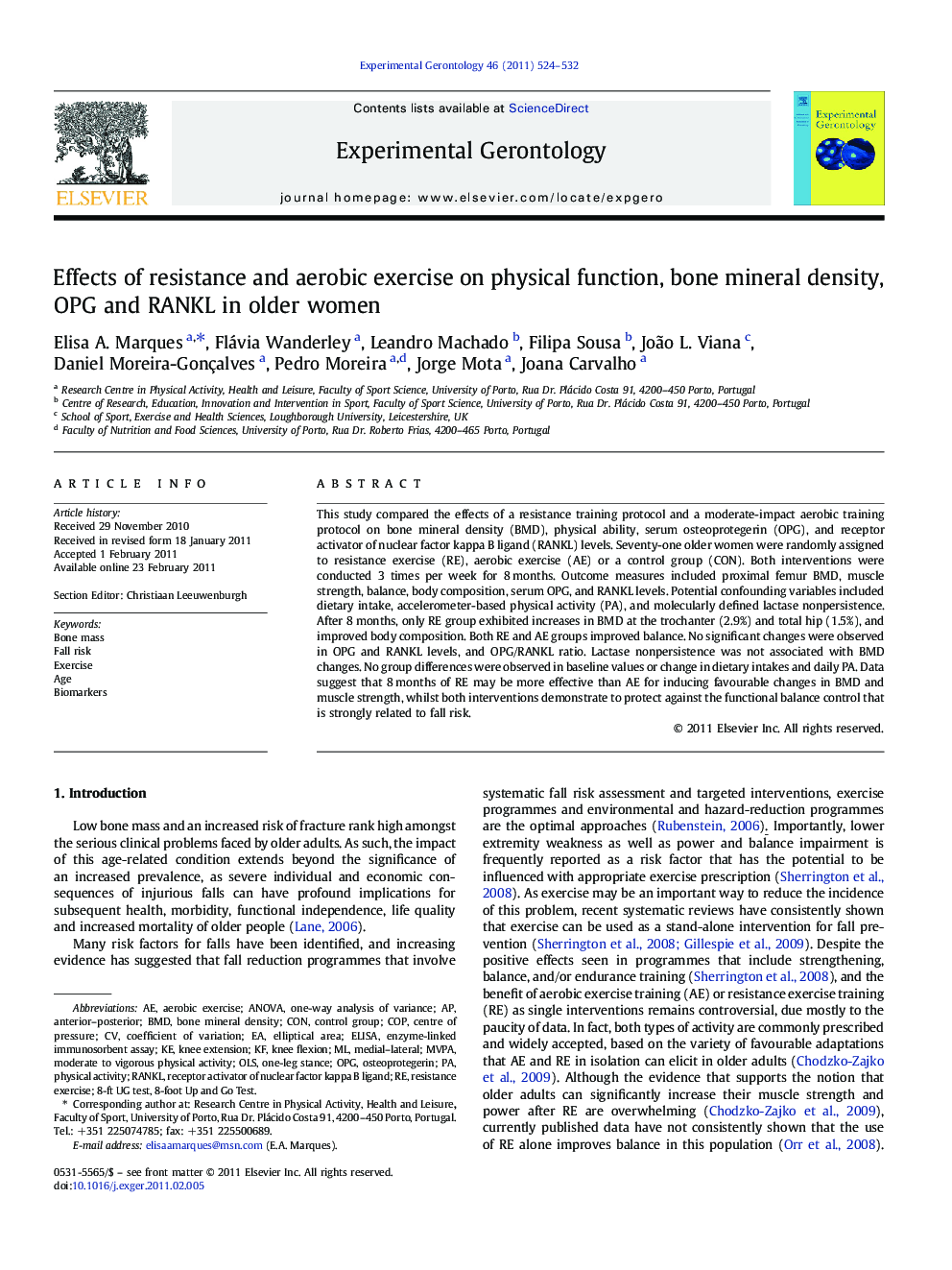| Article ID | Journal | Published Year | Pages | File Type |
|---|---|---|---|---|
| 1906881 | Experimental Gerontology | 2011 | 9 Pages |
This study compared the effects of a resistance training protocol and a moderate-impact aerobic training protocol on bone mineral density (BMD), physical ability, serum osteoprotegerin (OPG), and receptor activator of nuclear factor kappa B ligand (RANKL) levels. Seventy-one older women were randomly assigned to resistance exercise (RE), aerobic exercise (AE) or a control group (CON). Both interventions were conducted 3 times per week for 8 months. Outcome measures included proximal femur BMD, muscle strength, balance, body composition, serum OPG, and RANKL levels. Potential confounding variables included dietary intake, accelerometer-based physical activity (PA), and molecularly defined lactase nonpersistence. After 8 months, only RE group exhibited increases in BMD at the trochanter (2.9%) and total hip (1.5%), and improved body composition. Both RE and AE groups improved balance. No significant changes were observed in OPG and RANKL levels, and OPG/RANKL ratio. Lactase nonpersistence was not associated with BMD changes. No group differences were observed in baseline values or change in dietary intakes and daily PA. Data suggest that 8 months of RE may be more effective than AE for inducing favourable changes in BMD and muscle strength, whilst both interventions demonstrate to protect against the functional balance control that is strongly related to fall risk.
Research highlights► RE increase BMD, muscle strength and balance. ► AE does not enhance BMD but improve balance. ► Serum OPG and RANKL levels do not change after 8 months of exercise.
